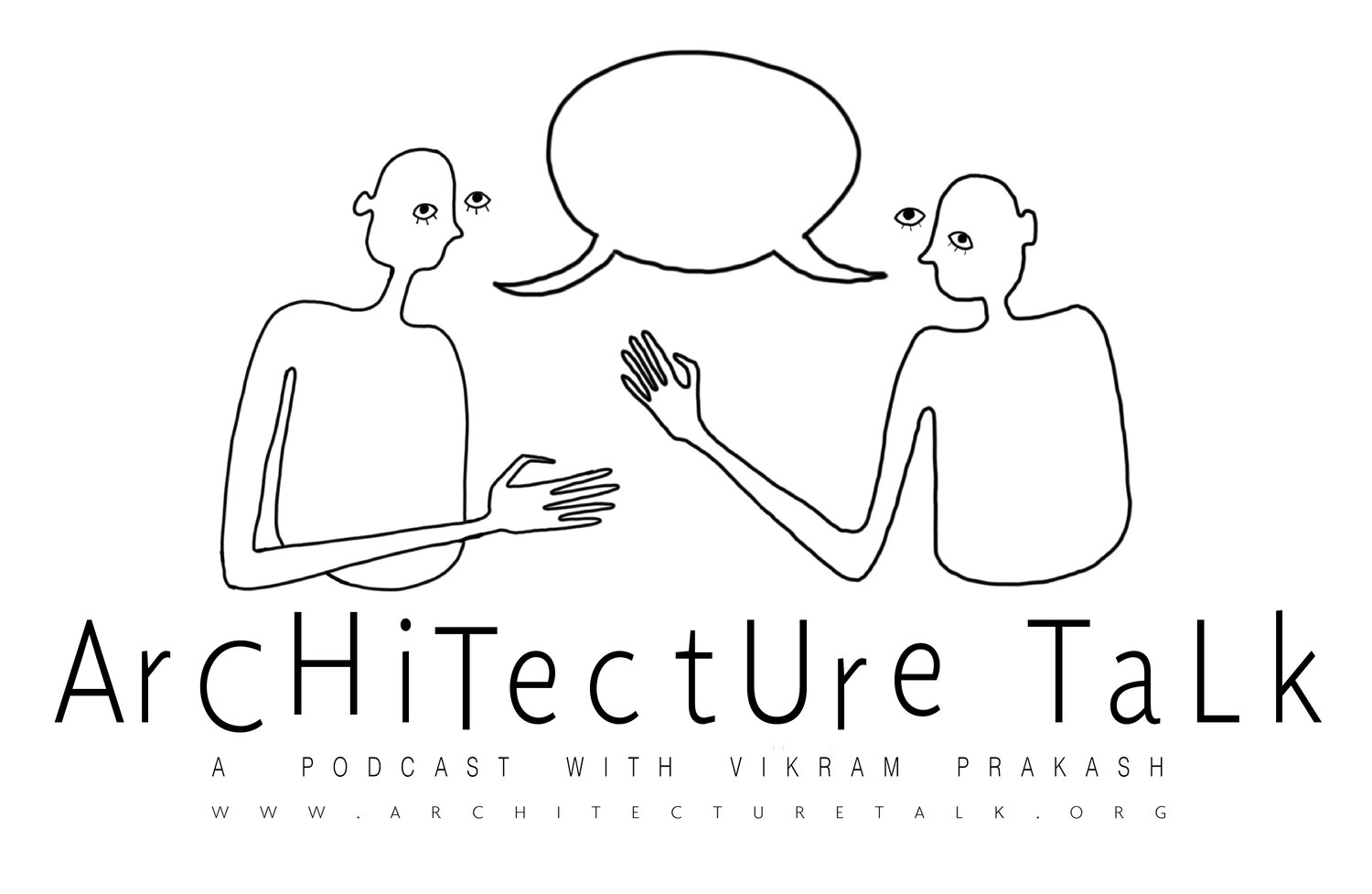95. Part II of Demolition of Kahn's IIM Dormitories with Sarosh Anklesaria, Shubhra Raje, and Riyaz Tayyibji
Original Drawing by Tori Haynes
“Architects are interested in the origin myths of a building but not the life myths that sustain a building through a longer period of time…origin myths are great…but they are not sufficient to sustain collective storymaking and the importance of a building over a larger period of time.”
Riyaz Tayyibji
This week, we continue our conversation with Sarosh Anklesaria, Shubhra Raje, and Riyaz Tayyibji about the recent developments at the Indian Institute of Management Ahmedabad (IIM) where controversial deliberations have led to the decision to demolish a large swath of dormitories on its campus designed by Louis Kahn, architect. While this decision has been temporarily halted, it has generated much conversation surrounding the value of experience, collective and micro histories, the role of empathy within the built environment, and changing the terms of engagement with a “growth” mindset.
Timestamp Outline
00:30 Part II of prehistory, circumstances, prognosis and path ahead for the proposed demolition of 14 dormitories designed by Louis Kahn as part of a new master plan of the IIM in Ahmedabad with Sarosh Anklesaria, Shubhra Raje, Riyaz Tayyibji.
1:30 “What is your approach to the concept of modernist heritage, preservation, conservation, or management of the change of a modernist heriatage? What is the right path forward for the IIM?” VP
2:30 “The conservation efforts can’t be separate from the larger masterplan ambitions. Primarily because at some point existing activities and functions within physical structures may need to be questioned….program changes...We’re not just saving someone’s signature work. It is time we work with clients and users even to shift aspirations from development as only building new...” SR
4:50 “The way forward for the IIM, they will not be able to separate the conservation aspirations from the overall masterplan.” SR
6:45 “A lot of the time, these institutions were built at the edges of cities or in the middle of nowhere where there were no amenities, which is why you housed faculty and students within a campus...at least a question can begin to be asked, what is it to be a campus within a city versus a campus somewhere else?...In order to innovate within architecture, you have to question and reimagine patterns of living, patterns of what institutions may mean…” SR
14:30 “....From being the Citadel on the hill, how do you outreach and engage with the very community you are part of?” SR
15:45 discussion of public advocacy in the context of the conservation of modernist heritage
16:30 “...[there is a] huge obsession both within the governing council and outside with students and people who are not familiar with this, which is one of structural compliance. And that seems to override all other questions...so all this talk about memory...is not going to hold up.” SA
17:13 “The question of ecology is really important and not being talked about enough...first we must disentangle this very problematic relationship between form and function, which is very modernist...very recent and the history of architecture, the history of cities show that it is the worst way of thinking about patrimony, that somehow function has to be married to form...there is no reason for that...and so these buildings can creatively repurposed and that opens up a whole host of different imaginations for what can happen to them.” SA
18:28 “I think a fundamental rethinking of conservation is important here...it doesn’t mean fossilization...and the question of embodied energy…” SA
19:50 “public advocacy also means that a certain understanding of the past and memory is part of a rich production of space...the city is a palimpsest because it is a series of layers…” SA
20:45 “...it is not a project of hegiography, but one of micro-histories, of institution building, of a certain post-independence climate that was so important…” SA
21:13 Public memory has an Oedipal quality to it VP
22:24 “The way that history is crafted doesn’t have to have a singular narrative. That somehow India has this Nehruvian legacy. This sort of history that has been written immediately creates a polarization, you either have this Nehruvian legacy or you have all these other voices…” SA
22:50 Micro-History
25:00 The trajectory of memory and the way we institutionalize memory
30:20 “Architects are interested in the origin myths of a building but not the life myths that sustain a building through a longer period of time…origin myths are great…but they are not sufficient to sustain collective storymaking and the importance of a building over a larger period of time.” RT
30:40 “Maintenance is not just a maintenance of bricks and mortar and concrete, but its also a maintenance of memory, a cultivation of a larger story that is a living breathing work in and of itself.” SA
32:00 “Maintenance is not just about the past, it is about keeping the past alive…” SR
36:00 false conflation between permanence and maintenance
39:00 Empathy must enter the conversation SA
40:00 What is the value of architecture as a cultural product?
43:00 “The genesis of modern architecture is intrinsically tied with demolishing, whether you look at Haussmann in Paris, the world wars, or the end of modernism…demolition is quite symbolic - look at 9/11...” RT
44:00 Victor Hugo and the contention that architecture is no longer the holder of memory, instead it is the printing press.
47:45 “This idea of empathy is one that is produced through the collective memory…There is a thickness of stories that have to be produced, collected in order to create empathy for brutalist architecture.” SA
52:15 “Even as users we fall into habit...this whole business with empathy is a way of reimagining what is built.” SR
53:00 “We are asking architecture, what is this obsession with new?” SR
54:00 discussion of the next generation...it is so focused on growth...how might we rethink growth?
56:40 Kate Raworth and Doughnut Economics
58:00 How might we change the rules of engagement?






